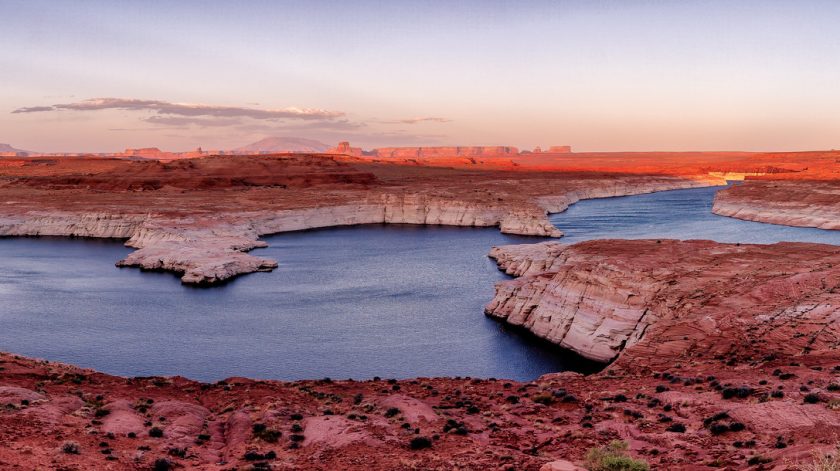Research Aims to Keep Water Flowing in the Southwest
December 8, 2024

The Colorado River is an essential source of water for the southwestern region of the country — with seven states and Mexico depending on it for both municipal and agricultural use.
A 1922 agreement allocates how much water each state is allowed to consume. But that’s set to change in 2026, with stakeholders from states, tribes, the U.S. federal government and Mexico negotiating the rules that will govern the future operation of reservoirs along the Colorado River Basin.
Understanding the water supply of the Colorado River Basin over time — and the factors driving its change — can help these stakeholders make plans for sustainable practices for water use, according to Bureau of Economic Geology Research Professor Bridget Scanlon. This is especially important in light of recent water shortages. In May 2024, these shortages led to Lake Powell, the largest water reservoir by surface area in the United States, dropping to a record low of about 35% of capacity.
To that end, Scanlon and collaborators have recently completed research on the water supply of the Colorado River Basin from about the 1940s to the present. The research synthesizes surface water and groundwater supply data from a range of sources — including satellites, ground-based monitoring and regional modeling. It also shows how different laws and water use practices influenced supply levels.
“This gives us the longer-term context,” Scanlon said. “And you can see how the system has evolved and how things have been changing over time. And that’s important if you’re trying to understand controls (on water) — climate variability, variations in irrigation pumpage, all these things.”
For example, a combination of wet climate periods, irrigation practices that flooded fields, and water delivery from the Central Arizona Project helped increase water levels in some Arizona aquifers from the late 1970s to the early 2000s after a period of extreme decline starting in the 1940s caused by groundwater pumping for agricultural use.
However, recent water shortages in the Colorado River, largely influenced by a mega drought during the past two decades in the basin, have led the aquifers to decline again.
Scanlon said this historical perspective underscores the importance of wet climate cycles, conjunctive use of surface water and groundwater with managed aquifer recharge, and water conservation.
Back to the Newsletter